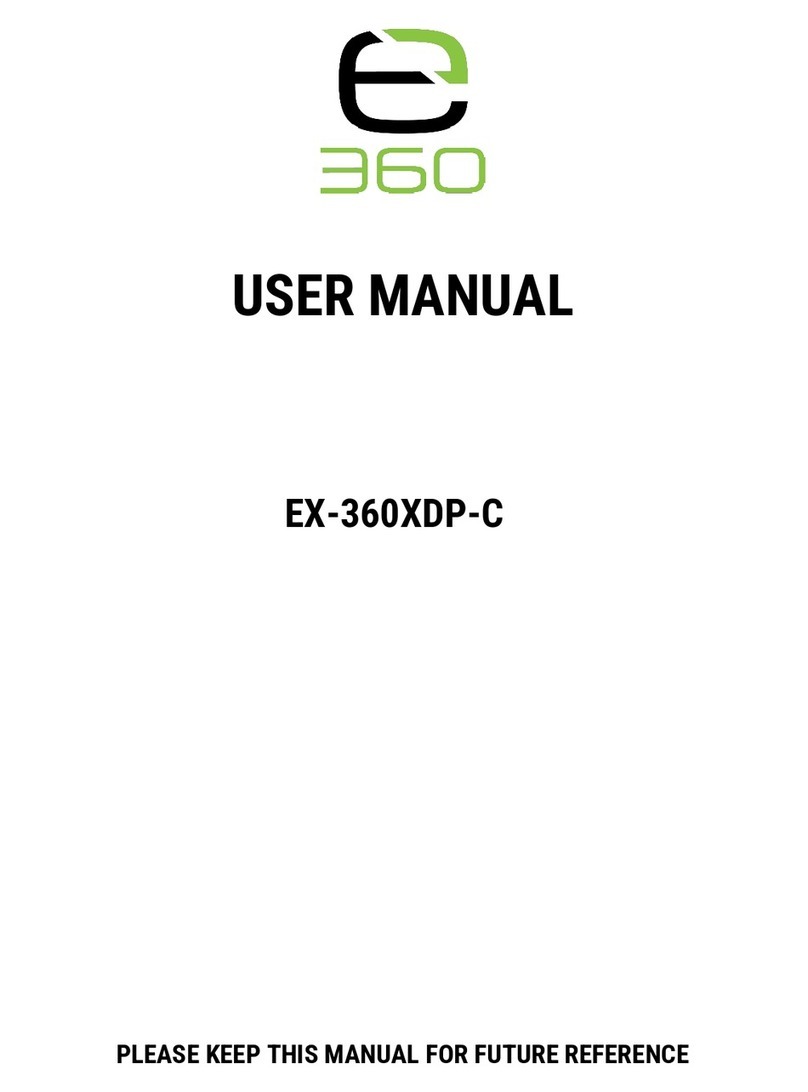DISCHARGE RATE
The discharge rate, just like the charge rate, is based on the battery's capacity and how many are
connected in parallel. With each battery connected in parallel, the available discharge rate is
increased by the amount allowed per battery up to the maximum amount of four batteries. The
continuous discharge rate should not be exceeded unless for temporary surge purposes. The
maximum and pulse discharge rates are provided to maintain a surge at or below these levels. The
VPR is designed for deep cycle use do not use as a starter battery. See the technical specifications
page for single battery continuous, maximum, and pulse discharge rates.
INVERTER USE
When using an inverter powered by the VPR battery(s), make sure to properly match the inverter
size (wattage) to the number of batteries used. When viewing the inverter's DC input
specifications, consider the surge current and the batteries' continuous current required to power
the inverter. The maximum surge and continuous DC input current for the inverter and maximum
surge and continuous output current for the VPR battery(s) need to match closely. Suppose the
VPR battery(s) DC output is higher than the inverter input. In that case, that is acceptable because
the inverter will only draw from the batteries what it needs. The inverter cannot have a higher DC
input than the battery(s) DC output. It can draw more current from the VPR Battery(s) than they
can supply, possibly causing the BMS on the VPR to disconnect due to over-discharge.
BATTERY MONITORING
To enhance the VPR 4Ever series battery experience, we recommend using a battery monitoring
system that measures coulombs rather than just voltage. When using voltage alone to determine a
lithium batteries state of charge, it is difficult because its discharge curve is flat compared to a lead-
acid battery. The VPR LFP battery will remain between 13.0-13.2V (open circuit) for much of its
discharge cycle. The Expion360 battery monitor is an excellent choice as it is very accurate for
lithium, easy to program, and use. It shows capacity in amp hours and as a percentage. It has a time
counter that will display the time until empty when discharging and time until full while charging. It
will also show power going out while discharging and in while charging as current (DC amperage)
and watts. It will lastly show the battery's voltage. The Expion360 battery monitor will work for
other brands of LiFePO4/LFP batteries and lead-acid chemistry batteries.
BATTERY LIFE
Many factors can determine the VPR life span or life cycles (charge/discharge cycle). The main
element is the depth of discharge on each discharge cycle before recharging the battery. The
deeper the battery's discharge on each cycle, the lower the expected life cycles the battery will
have. This depth of discharge life cycle equation is a fact for all battery chemistries. The VPR is not
damaged by deeply discharging it; only the life cycles are affected. The VPR can be recharged at any
point in its state of charge without harming the battery. Other aging factors that can affect life
cycles are charging and discharging the battery at higher than recommended rates and operating
the battery at extremely low and high temperatures. When we established specifications for using
the VPR, we have considered both safety and maximum life cycles. Please follow the specifications
for the discharge rate, charge rate, and operating temperatures.





























